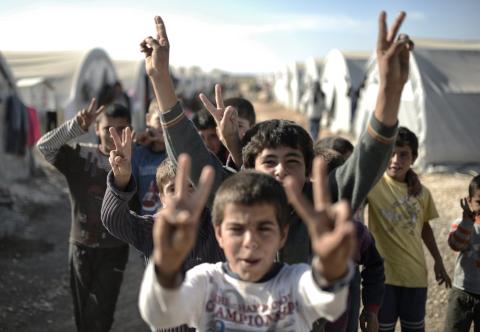Just two weeks before Earth Day, President Trump announced his plan to launch a missile strike against Syria, stoking the flames of the War on Terror. Following the strike, Trump tweeted “Mission Accomplished,” a proclamation that sounds eerily familiar.
Here we go again.
The past 3 years have experienced a surge of political activism from all sides. However, it is concerning that there is little support for antiwar efforts. The Nationwide Solidarity March for Peace, which occurred last October, has garnered 2,600 likes on Facebook. This pales in comparison to other movements such as the Women’s March (807,000 likes), March for Science (684,000 likes), Black Lives Matter (321,000 likes), March for Life (177,000 likes), and the Standing Rock Protest (137,000 likes).
While I applaud those who stand up for environmental sustainability or make environmentally-friendly decisions in their daily lives, these efforts can only go so far. True global sustainability cannot be achieved until we end warfare. War is a major and often overlooked threat to the health of our planet.
Between 1965 and 1974, approximately one million people lost their lives in the Vietnam War. During that time, the United States government sprayed over 100,000 tons of highly-concentrated herbicides across Vietnam, Laos, and Cambodia. Chemical warfare was responsible for a sharp decline in elephant and rhinoceros populations, as well as the destruction of the tropical rainforests they occupy.
Today, children in Vietnam continue to suffer from congenital disabilities and deformations as a result of Agent Orange.
The Rwandan Civil War, between 1990 and 1994, took the lives of 500,000 people and displaced over a million others. Refugees occupied lands adjacent to national parks in Rwanda, Uganda, and Zaire which is now the Democratic Republic of the Congo.
With no other options, they extracted resources from the parks, causing deforestation and declines in antelope, buffalo, and lion populations. A lack of enforcement within the parks gave poachers the opportunity to hunt endangered mountain gorillas.
Additionally, the large number of dead bodies resulting from genocide polluted the Lower Congo Watershed.
In 2016, The Intercept reported an estimated loss of 1 to 2 million human lives in the ongoing War on Terror. It is impossible to understand the full environmental impacts of the nearly 17-year-long war until the conflict settles; therefore, we can only infer based on known statistics.
Following the 9/11 attacks, President Bush declared war on Afghanistan, followed by Iraq. His administration conducted 70,000 air strikes, also dropping bombs in Pakistan and Somalia. Between 2003 and 2004, Bush averaged 50 air strikes per day. In 2003, he proudly displayed the iconic “Mission Accomplished!” banner on the USS Abraham Lincoln.
Following a 2008 campaign which championed an anti-war agenda, and after receiving the Nobel Peace Prize in 2009, President Obama conducted drone strikes in the four aforementioned countries, as well as Libya, Syria, and Yemen.
Toward the end of his service, Obama dropped over 20,000 bombs per year, more than 70 per day. President Trump has continued this violent approach to foreign policy.
In April 2017, he became the first president to drop a MOAB, the largest non-nuclear bomb in existence, on Afghanistan. During his presidential campaign, Trump expressed willingness to utilize nuclear weapons.
Last September, the U.S. Congress engaged in “a rare act of bipartisanship,” and approved a $700 billion increase in military spending. An overwhelming 89 out of 100 senators approved the bill, including those who claim to lead “The Resistance” against President Trump.
Many of these same individuals supported Trump’s strike.
Besides human lives, what is at risk in the War on Terror? Afghanistan is home to an impressive diversity of endangered species, including the snow leopard, Asiatic black bear, Siberian crane, and eastern imperial eagle.
Conflict taking place near rivers in Iraq and western Syria may pollute the Tigris-Euphrates river system, which drains into the Persian Gulf, threatening the hawksbill sea turtles6 and coral reefs that live in it.
The Libyan Civil War, and the 2011 NATO strikes on coastal cities, undoubtedly impacted Libya’s marine protected areas and the fisheries on which the nation depends.
It is up to us, especially those who support sustainability, to thrust this topic into the greater political conversation. In the upcoming mid-term elections, the presidential election of 2020, and beyond, we must vote only for those who have taken a strong stance against war and who oppose endless military spending.
Every bomb dropped, every chemical sprayed, and every refugee crisis affects the health of our planet and our well-being. How much longer will the U.S. government continue to destroy our planet?
As long as we stay silent.
